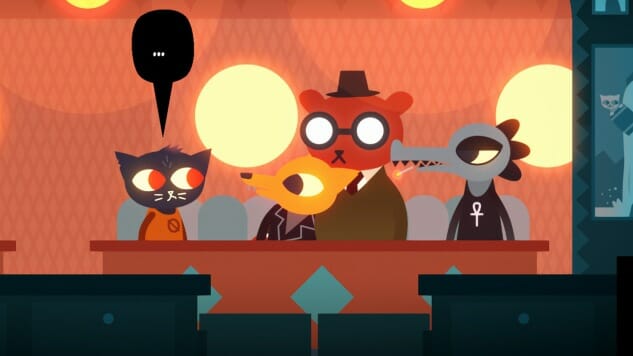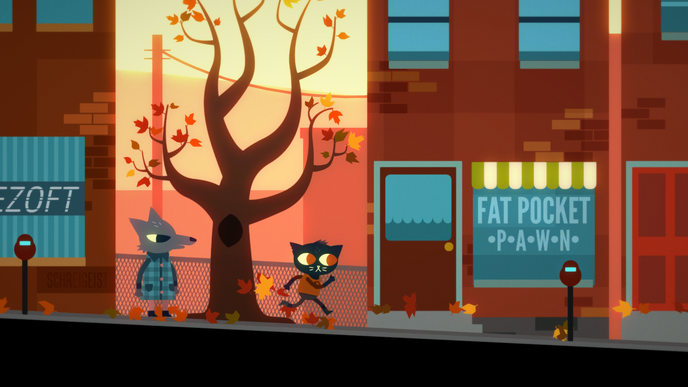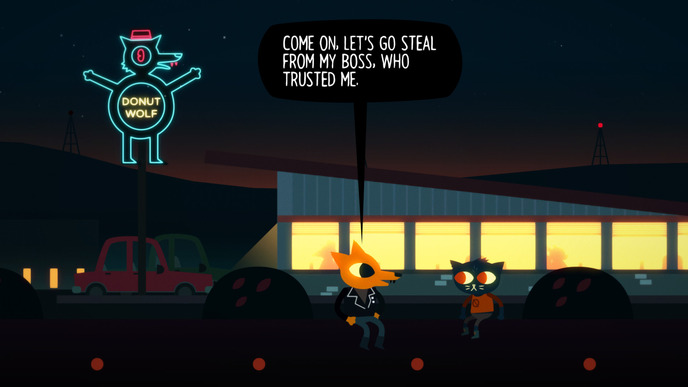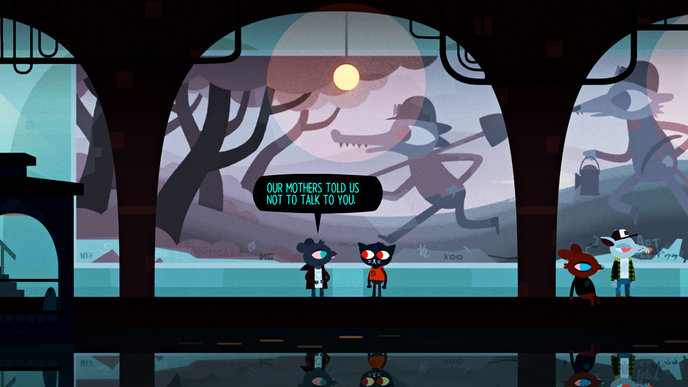
Braid was the first time a videogame ever truly attempted “time travel.”
In Braid, moving the hero from left to right meant moving forward in time, while moving from right to left would often represent moving backward. In practice, this locomotion was a way to “undo mistakes” in a totally tangible, practical sense: Moving “backward” across the screen would “reverse time” in a mechanical way. (Braid’s larger, time-braiding framing narrative—about a longing to somehow warp a story whose end is already predestined—was also very much about wanting to undo time’s effects, but on a more substantive, emotional level.)
What Braid did so well is understand that videogames’s nearest analogue is comic books. In games, as in comics, the hero moves across a story-board—from left to right, usually—in the hopes of following a predetermined path to reach a victorious, already-scripted conclusion.
As the venerable Scott McCloud theorizes in the book Understanding Comics, how we interpret time moving—at least, spatially, from point A to point B, whether across a printed page or a computer monitor or a TV screen—is wholly governed by the way our culture reads books. If we are already accustomed to the idea of moving our eyes from left to right to finally discover the conclusion of a sentence, then we are already primed to think of the rightmost part of a page as “the future,” and the “leftmost” end of a page, or screen, as “the past.”
This one piece of McCloud’s spatial comic-book theory is massively important when appreciating the videogame Night in the Woods [1].
When our feline hero Mae disembarks a train to visit her family, she hops out near the rightmost edge of the opening screen, and her very first objective in the game is to move out of the Possum Springs train station, to the left. (For any videogame, this immediate leftward movement is really unusual.) To her left, there is an obstacle—some seemingly-random janitor is blocking her exit.
From here-on-out, Mae’s objective is always simply her ceaseless movement leftward. She leaves the train station through the left. She crosses a ravine from right to left. She sneaks through a playground from right to left. She navigates the distance from the rightmost edge of the screen, toward the left, all the way home. (Eventually, the furthest point of “leftward” contains Mae’s hometown’s own mysterious history.)
Mae has fully “reverted”—she is always either charming or infuriating because of her infantilization—so it makes sense that she gravitates toward her own childhood home [2].
Mae, by the way, has dropped out of school shortly into her sophomore year of college—she hasn’t yet come clean to her parents about her decision, but she presumably expects to spend the rest of her young adulthood here in town. From personal experience I can tell you: There is very little dignity in moving “back” to your hometown, should it ever happen to you. (I like to think of Night in the Woods, personally, as Ghost World Part 2: The Reckoning, in which divine fool Enid Coleslaw has had to take a return-bus back to her old, embarrassing hometown.)
Mae walks deeper into Possum Springs, ever toward the left of the screen. If you explore all the way to the game-world’s leftmost stopping-point—constantly pressing in that direction to discover what that part of her hometown holds in store—you will arrive at an impassible chain-link fence. This, seemingly, is the game-world’s inevitable “boundary.”
But Mae knows someone did pass this chain-link fence at some point, in order to commit a crime.
Perhaps Mae feels isolated at times, but she isn’t totally alone. She has other alienated, unusually well-drawn teen archetypes to keep her company. First, there is her best friend from high school, Gregg—seemingly the only person to be truly pumped that Mae is back in Possum Springs. Gregg is a fox (literally, a fox), and he is artistic and works in a convenience store, and totally reminds me of a dude I used to know. Angus is a bear—literally, a bear. He is less certain about Mae, for reasons that eventually become clearer, but he’s a great example of that stoic person you adore upon first meeting, whom you long to talk to if only so you can attempt again to impress him with your smarts.
Then there is Bea, a cool goth crocodile with an ankh choker and an always-lit cigarette, who will almost certainly become the Jane Lane to every teen-girl gamer’s Daria. (Oh, sure, Gregg is Mae’s actual best friend, according to the storyline at least, but every player will almost certainly strive to befriend Bea, whose kindnesses are few and snippy. In many ways, Bea’s painful friendship could well become the heart of the game—depending, of course, on which of Mae’s friends you choose to spend the most time with.)
Night in the Woods excels when it doesn’t try to explain anything. Gregg is gay, but you know this about him a long time before he really mentions it. Townsfolk tend to not be recognizably-gendered (not even Aunt Molly is identifiably female until Mae’s dad calls her by name). Other minor characters also resist easy, instant judgment: The leader of the local church, Pastor Karen, eventually reveals herself to be left-leaning and agnostic, and not at all the hardline Evangelical that Mae probably expects of her.
Even our hero Mae herself very likely suffers from depressive derealization. This isn’t indicated explicitly, no, but it’s a fair guess. And yet, rather than dwelling on this possibility at all, Night in the Woods instead plunges itself into Mae’s “unreal,” finding the true horror in Mae’s mundane.
Night in the Woods has a terribly slow start, unfortunately. Worse, its best horror moments arrive somewhat too late. These moments are almost always firmly established in the “uncanny,” or “freaky.” But to establish what is “uncanny,” the game must first demonstrate the “canny”: The game necessarily must spend a great deal of time showing why Mae’s world is ordinarily safe and comfortable, in order to convey what is eerily changing.
In videogame parlance, we usually use the descriptor “uncanny” to talk about character models that don’t look quite human. But that isn’t entirely what “uncanniness” means. In German, the word for “uncanny” is “unheimlich”—literally, the “not-at-home.” If “heimlich” refers to that which is friendly and familiar, the “unheimlich” is everything that is eerie, weird, “like home, but not.” (To the Danish, it is the difference between hygge and uhygge[3][4].)
Possum Springs proves itself a very comfortable place, and players can easily lose themselves there. Between the minigames, the colorful townspeople, and the awful “local business” puns, it’s so easy to not only wish you inhabited Mae’s world, but to feel like you already do.
When Mae’s reality begins to crack, Night in the Woods goes full Hamlet—”Is Mae losing it, or is this really happening?” It ought to be a terrific plot point.
Still, Night in the Woods ultimately presents a supernatural mystery that is securely grounded in the “rational.” Hauntings, for instance, are real—but they tend to be present-day echoes of past wrongs. Ghosts are real—but they tend to be private, guilty burdens Mae is forced to bear alone. Hallucinations are real—but they are machinations of Mae’s own mind.
All this alone isn’t disappointing (although there is something dispiriting about exploring a supernatural mystery that eventually proves to have zero supernatural element to it). Instead, what frustrates about Night in the Woods is its unevenness. Just as soon as Mae has a grip on the “real” story of the town’s historical corruption, the crimes solve themselves. Worse than that, the mystery corrects itself, leaving Mae and her merry band of ne’er-do-wells little else but to go their separate ways and settle into their new lives. It’s an ending that almost seems sort of… boring. Well, that’s life, I guess.
Yet Night in the Woods glories in leaving its strangest mystery unsolved. You see, during a fever-dream, Mae meets whom she believes to be an ancient god. But she never learns who she actually met. So we, and Mae, are left wondering: Who is God, anyway? Is He loving, caring and interested in our small mundane lives? Or is He aloof, detached and apathetic? And which, of the two, did Mae meet?
In the end, of course, Mae can’t entirely be sure which god she met, or whether the god were “real” at all—and, for that matter, we should never know the truth, either. The true magic is indeed in mundanity: In life, there are some mysteries that can never really be solved.
1. I know a lot of people who worked on this game, and I apologize for that. In a break from this publication’s tradition, I prefer to “review” this game without offering a final score.
2. “The process of estrangement from self and others results from a declining sense of embodiment in social space and an associated diminishing of communication possibilities. …The dementing body is situated temporally and spatially in a known past as opposed to a confusing and incoherent present. From this basis, we can suggest that the not-uncommon ‘behavior’ of the sufferer who ‘wanders’ back to the house of his childhood is a motivated attempt to return to the security of a known ‘habitus.’ The logic of this argument is derived from the superficially self-evident notion that social and individual identities are tied to the body and its location in time and space.” —Christopher King, “Cultural dimensions of dementia and care-giving,” 1997.
3. “The word ‘uhygge’ describes the exact opposite of cosy: it is the name for the unsettling feeling that you are being watched from the forest. Perhaps by a troll or an evil witch.” —Vanessa Thorpe, “Trolls, killers, watchers in the woods: Danes chill to the dark side of hygge,” 2016.
4. “It means frightening; it means sinister. If hygge is sitting round the campfire, all differences forgotten, warmed by the dancing flames, uhygge is the darkness beyond that enchanted circle. Uhygge, in fact, threatens to engulf the warmth, the solidarity, the kindness. In the unfathomable bleakness of uhygge exist those terrible things from the outside that could destroy you.” —Charlotte Higgins, “The hygge conspiracy,” 2016.
Jenn Frank occasionally writes about videogames. She can be found on Twitter as @jennfrankgames, or on Mastodon @jennatar.




